How to organize it correctly?
To be in the kitchen with comfort, you need multi-level lighting:
- Each functional area (a place for cooking, eating and resting) must be equipped with separate lamps.
- It is desirable that the switches are located in convenient places: at the entrance to the kitchen and, if the room has a large area, in the dining area.
- In our country, there is not enough natural sunlight, so designers and apartment owners traditionally choose lamps with a warm tone, which create additional comfort.
The lighting of a small kitchen cannot be limited to one chandelier. A room with a low ceiling and a modest area should be equipped with several light sources: in the center, above the worktop, above the dining table.
Lighting options
Before doing repairs, you should think in advance about the location of lamps, switches and other equipment, since finishing work is carried out only after all current-carrying cables have been laid.
General lighting
First of all, it is worth providing the kitchen with one central or several light sources built into the ceiling. They are necessary for convenience when entering the kitchen, as well as during reception and cleaning.
In the photo there is a spacious kitchen-living room with ceiling lighting in the form of spotlights.
Lighting of functional areas of the kitchen
It is difficult to imagine a comfortable working area for cooking, submerged in the twilight. It is also difficult to enjoy food or have sincere conversations at a table where the plate or the interlocutor is hard to see. It is for the comfort of households and guests that every corner must be additionally highlighted.
Light for the kitchen in the work area
Lamps are recommended to be placed above the tabletop just below eye level. To wash the dishes efficiently, it is desirable that the light also falls on the sink. It is not necessary to light the sink separately if it is installed in the center of the work surface.
In the photo there is a kitchen, where lamps are built in under the cabinets and illuminate the work area.
There are situations that require constant standing at the stove. Then a small addition as a lamp above the stove will come in handy. Often this function is performed by a cooker hood with a built-in light bulb.
Dining area lighting
Perhaps the most important detail that instantly helps to make the atmosphere cozier is the illumination of the kitchen table. It is the centerpiece of the kitchen-dining room, around which guests or family gather. It is important that the surface of the table or island is in a halo of light: in addition to creating comfort, this sets up an open friendly conversation.
In the photo there is a blue kitchen, the dining area of which is also a working one. It is lit by two pendant lamps.
Light sources are also needed above the bar: their purpose is not only lighting, but also zoning the kitchen space. If the kitchen is connected to the living room, then the lamps should be located not only above the dining group of table and chairs, but also next to the seating area - armchairs or a sofa.
Interior lighting for kitchen cabinets
The lighting of closed cabinets is exclusively utilitarian in nature: it does not in any way affect the perception of the kitchen as a whole, unlike the interior lighting of a headset with transparent facades. It is possible to equip cabinets or lower cabinets with lighting both at the stage of ordering furniture, and independently using economical LED strips.
In the photo, the illuminated apron echoes the decorative lighting of cabinets with glass doors.
Decorative
Additional light can solve the most unexpected and interesting problems. Decorative lighting is aimed at creating a special mood, as well as to highlight the features of the interior.
In the photo there is a lamp with the phrase, converted specifically for the kitchen from the anti-war slogan "Make love, not war."
Decorative LED lighting can be placed under the ceiling, on the edge of the podium, or linearly on the wall as an accent. The suite, illuminated from below, visually expands the space of a long narrow kitchen.
If home plants are placed in the kitchen that need additional lighting, it is also considered decorative.
In the photo, a non-standard decoration for the kitchen is a magnificent vertical garden.
What kind of lamps to use in the kitchen?
Consider the features of various lighting devices that can be used to decorate a kitchen room.
Spots
Small luminaires that create beams of directional light are called spots. As a rule, products are mobile or on track rails, so they are easy to adjust. In addition to the ceiling, spots can be built under kitchen cabinets, above an apron, or fixed to the wall.
Chandelier
This is the most traditional solution for Russian cuisines. For low ceilings, a no-frills product that fits snugly to the surface is more suitable. If the height of the room does not bother you, it is recommended to choose a hanging chandelier. In classic interiors, this option is the only appropriate one, but the modern style allows you to safely combine various lighting devices with each other.
Backlight
Local kitchen lighting can be organized not only with the help of spots. LED strips are especially common and are used everywhere. The main advantages of tape lighting are easy installation and the ability to choose any shade, both warm and cold.
The photo shows a bright kitchen, where the diode tape emphasizes the yellow headset, creating an accent color spot.
Lamp
Many owners prefer to use light beams - tubular fluorescent lamps, but their cost is several times higher than the price of conventional diode strips. Lamps differ in size and fastening method: flush models are built directly into kitchen furniture, and overhead models are attached to the surface. Their use is justified when you need to highlight a small area - for example, a sink.
The photo shows a modern white kitchen with combined lighting: fluorescent lamps play the role of local illumination, and the central light is realized using built-in ceiling lamps.
Pendant lights
These products are at the height of fashion today - a rare designer interior dispenses with lamps on a long wire. Most often, pendant models make up a stylish composition of several identical or just similar lamps. They are convenient in that they give a bright directional light, but, muffled by shades, do not cause discomfort to the eyes.
Spotlights
They are usually used when installing stretch ceilings. With their help, you can evenly distribute the light throughout the room, but the distance between them must be calculated in advance. Spotlights resemble office lighting to many, but for modern designers this method of lighting has long become the norm.
Halogen lamps save energy, but their installation is associated with certain difficulties, so most people prefer LEDs.
Features of lighting a small kitchen
At first glance, it seems that in a modest-sized kitchen, one incandescent chandelier is enough to illuminate the entire area. In fact, the brighter the room, the more spacious it seems.In addition, it is difficult to do without illumination of the working area: if during evening cooking, apart from the chandelier, nothing illuminates the tabletop, then a shadow from a person or an unsuccessfully located refrigerator appears on it.
The photo shows a small kitchen with a hanging chandelier, LED strip in the work area and spotlights above the cabinets.
Often in a small kitchen, a pendant lamp above the dining group plays the role of general lighting. But in this case, the illumination of the apron or the cooking area is required.
A diode tape installed along the perimeter of the ceiling can serve as an additional light: it will help to visually raise it. The most important thing is to fill the small kitchen with diffused light as evenly as possible, which will not create shadows.
Photos in the interior
If partitions are not expected in the kitchen-living room or studio apartment, zone lighting will help to separate the room or dining room from the kitchen.
Some light sources help to work for the chosen style: for example, hi-tech cannot exist without decorative lighting. In addition, an unusual lighting device can become a highlight of the interior, its main decoration.
The photo shows an example of zone lighting, where the kitchen is visually separated by ceiling lights.
In addition to the listed electrical equipment, designers use other light sources - not always practical, but original. In the classic kitchen interior, you can see wall sconces with lampshades that perfectly support the traditional style.
Loft-style furnishings are suitable for creative people. In such interiors, table lamps, floor lamps and unusual light structures are welcome guests.
Photo gallery
Rationally organized lighting in the kitchen should not only be functional, but also visually attractive, as well as create a comfortable atmosphere.

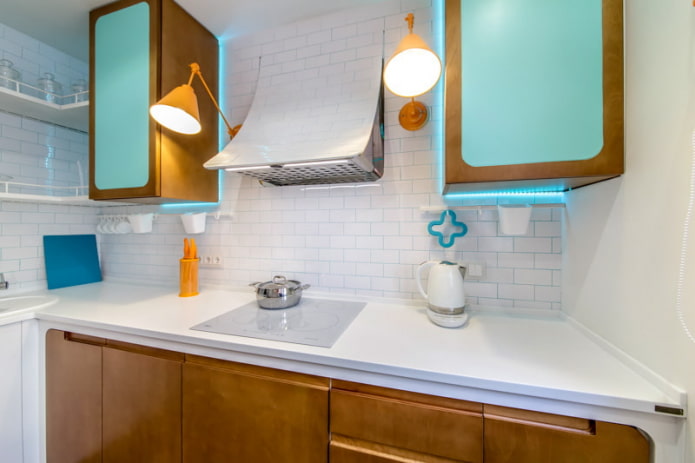
 10 practical tips for arranging a small kitchen in the country
10 practical tips for arranging a small kitchen in the country
 12 simple ideas for a small garden that will make it visually spacious
12 simple ideas for a small garden that will make it visually spacious
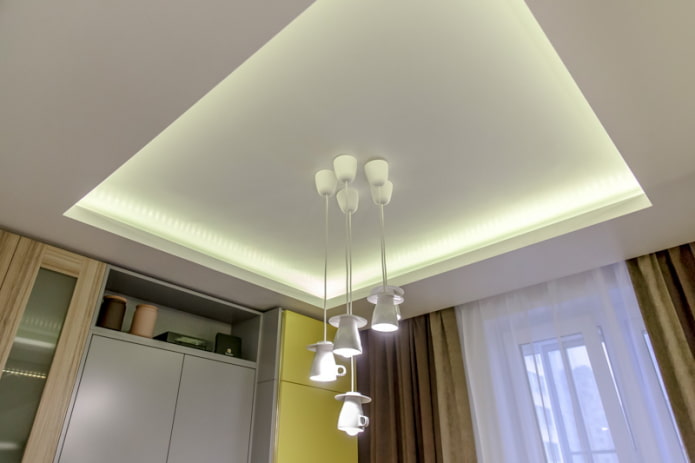
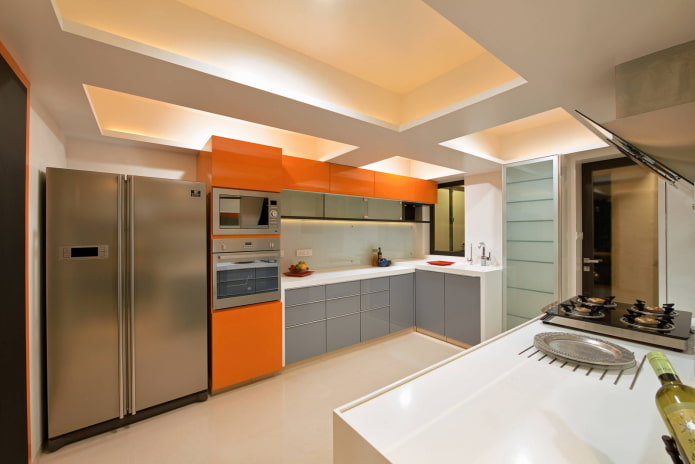
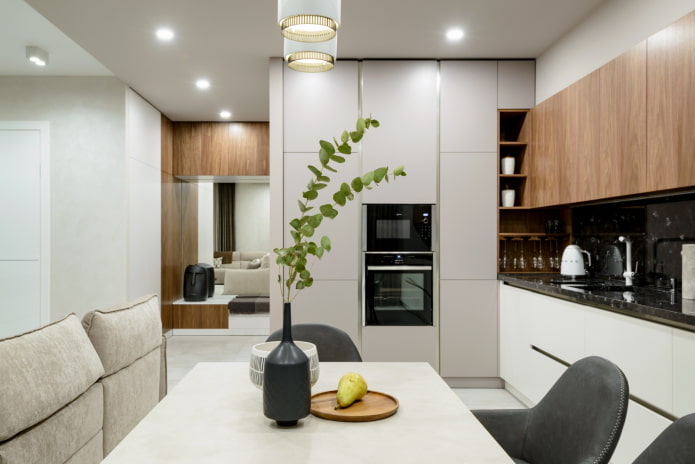
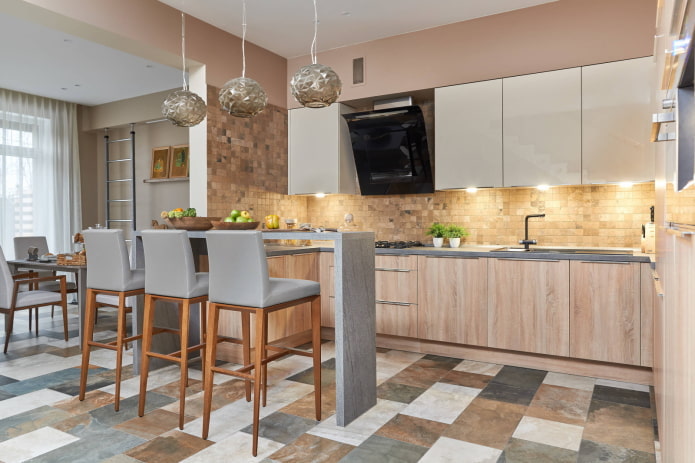
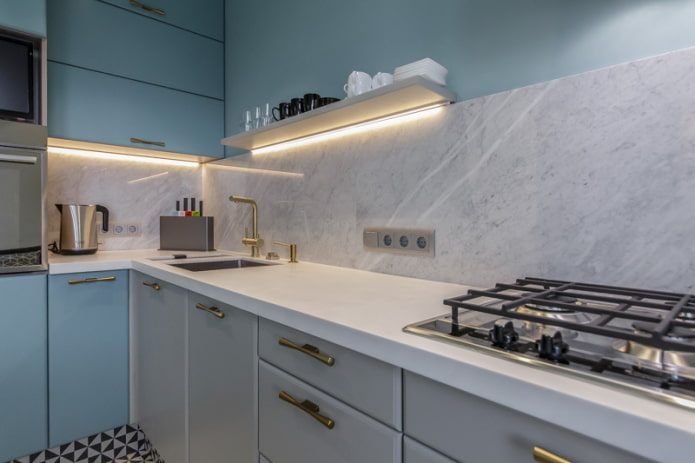
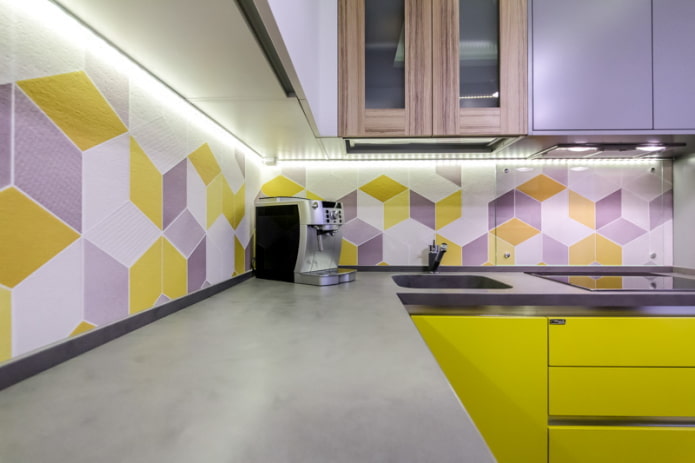
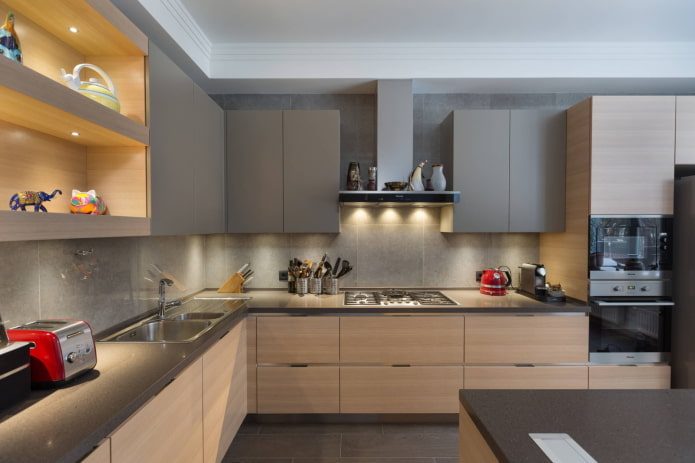
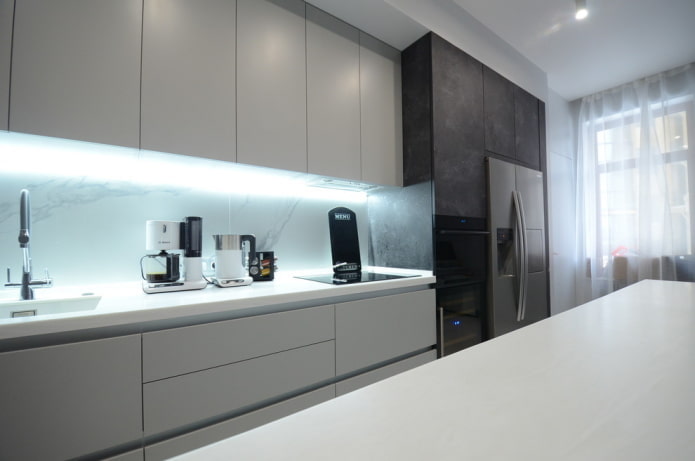
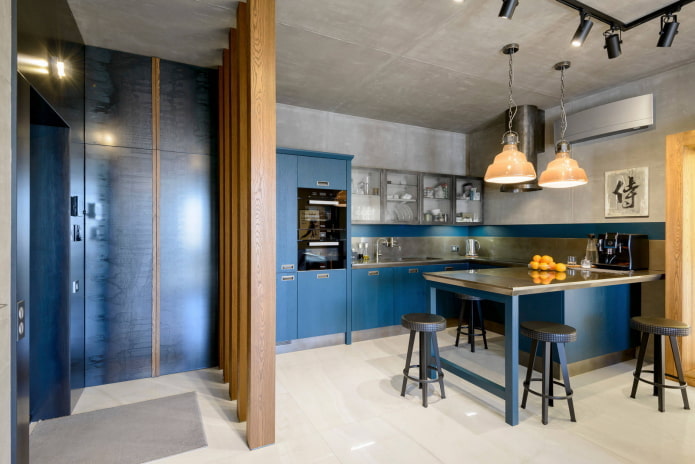
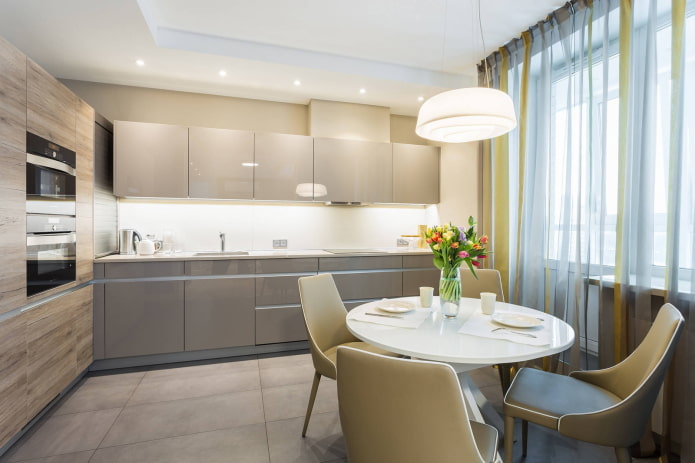
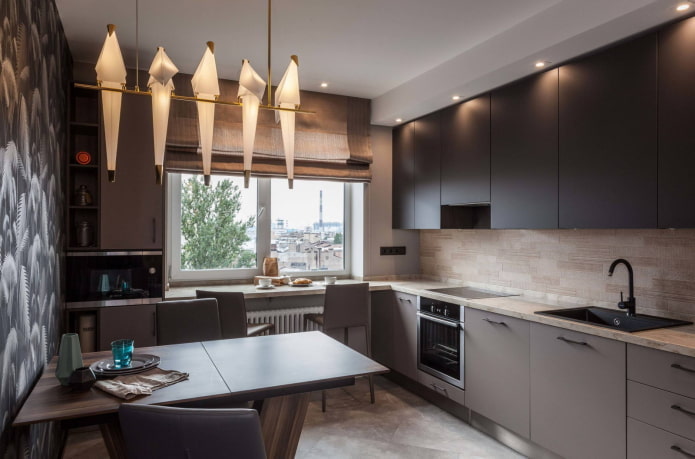
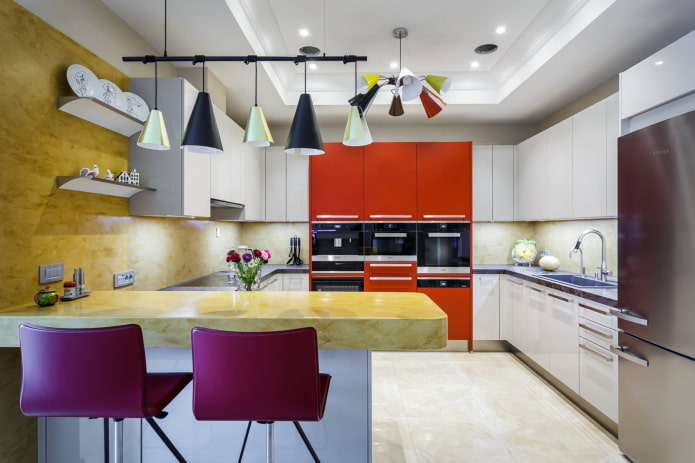

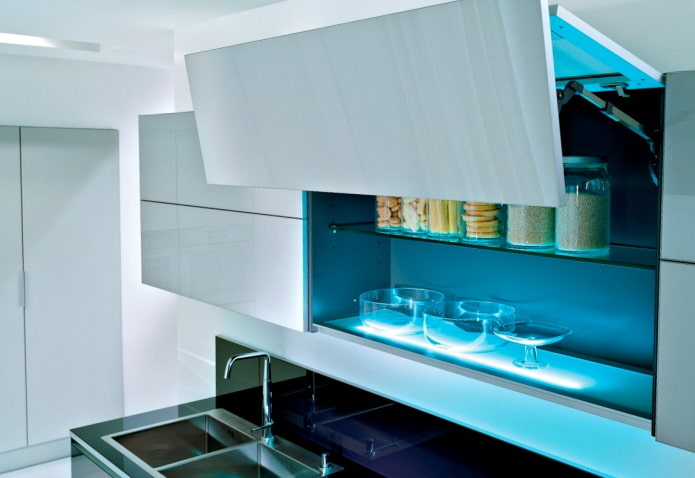
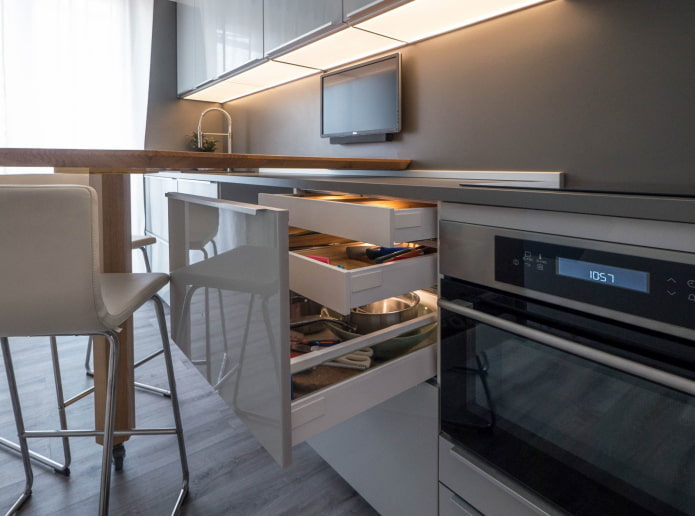
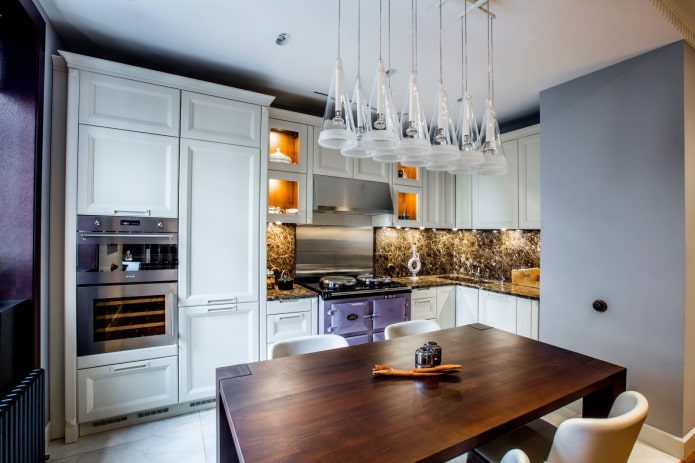
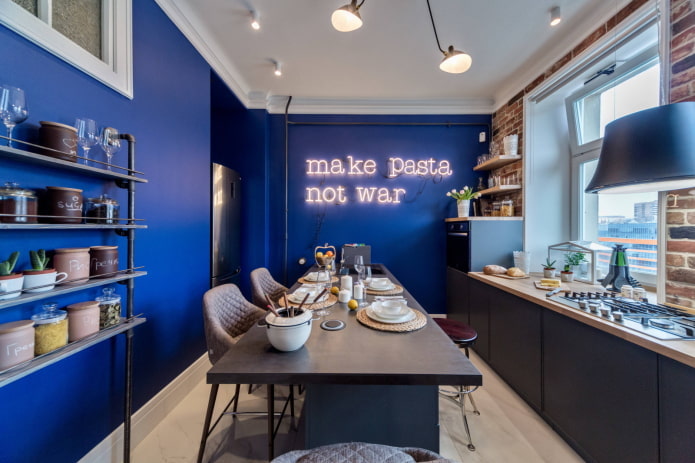
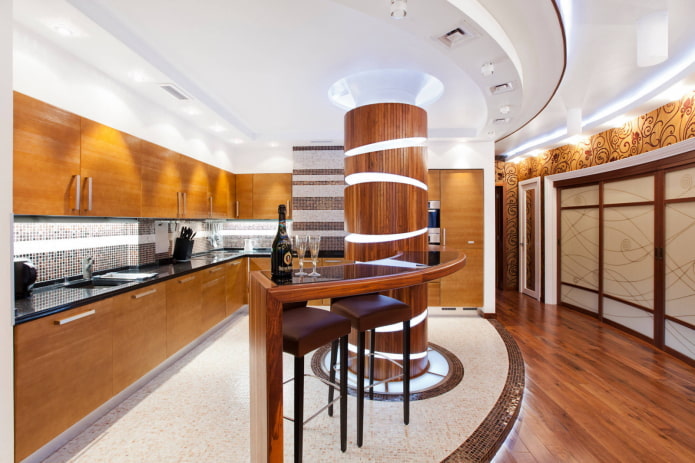
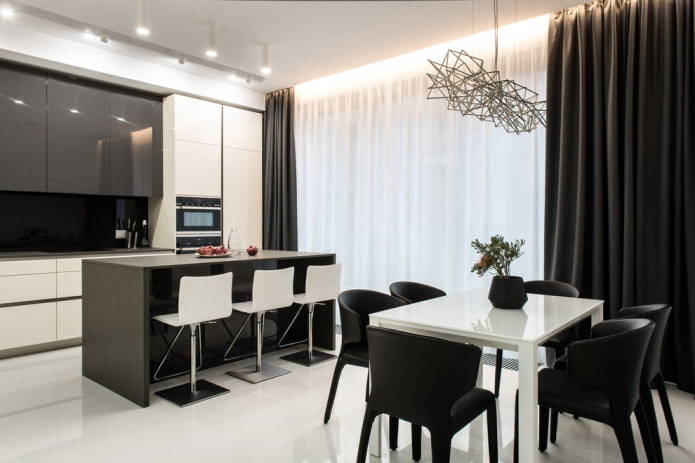
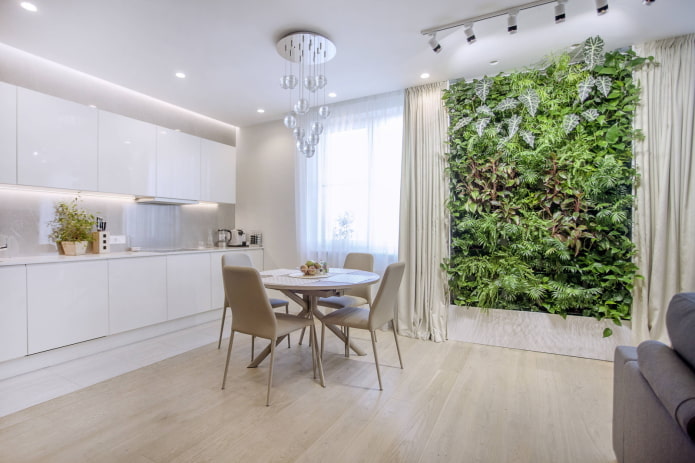
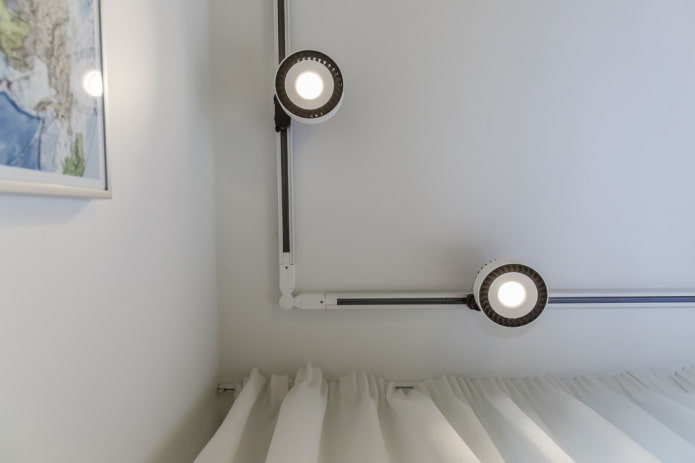
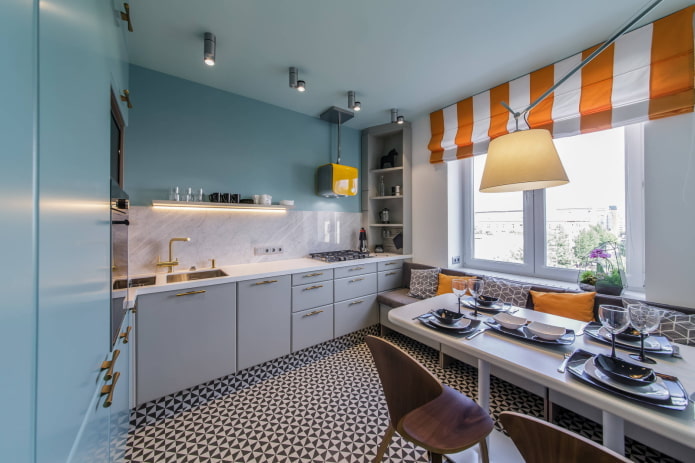
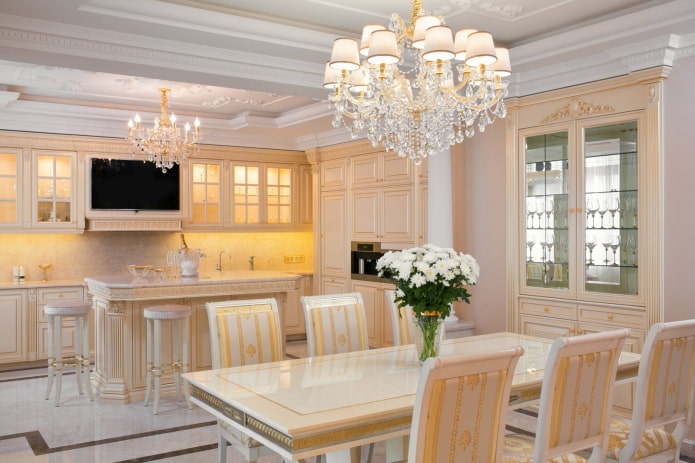

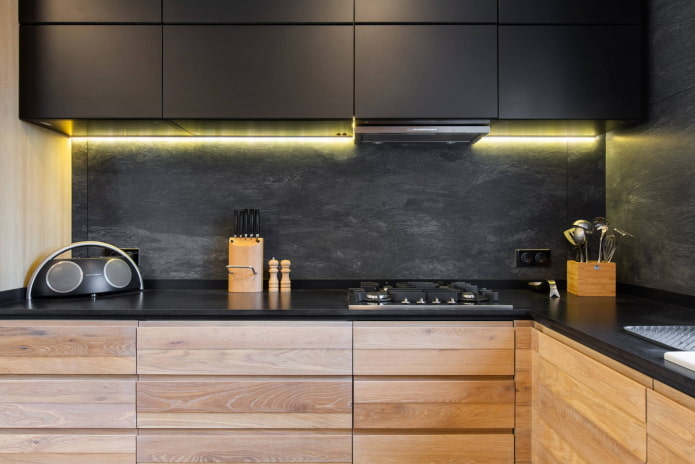
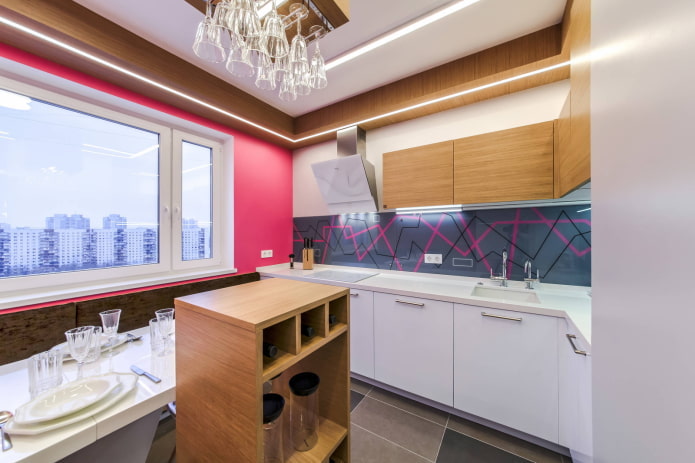
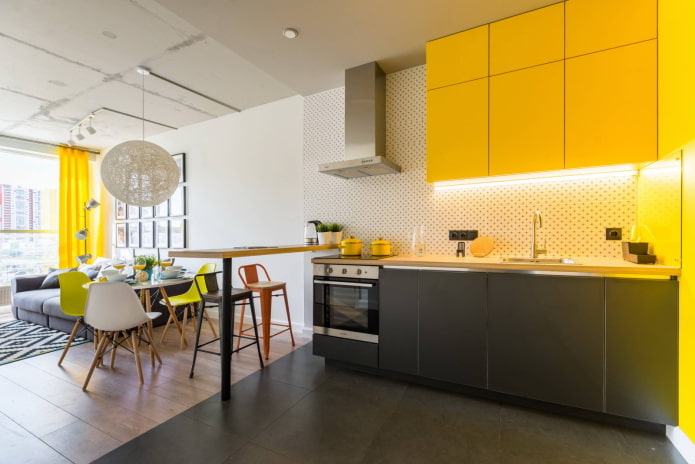
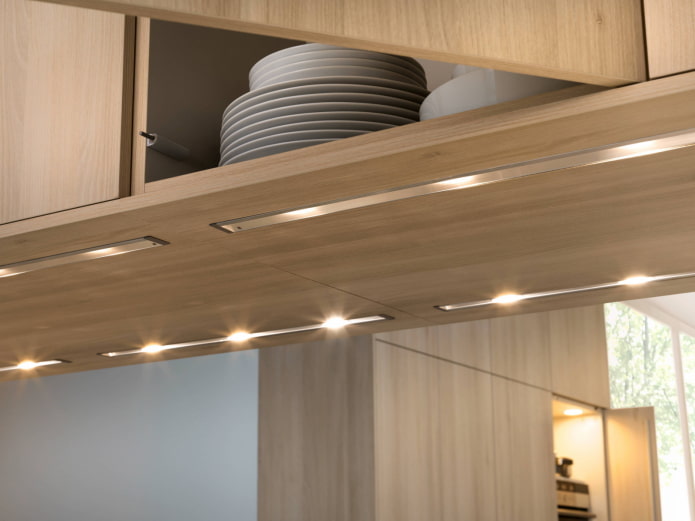
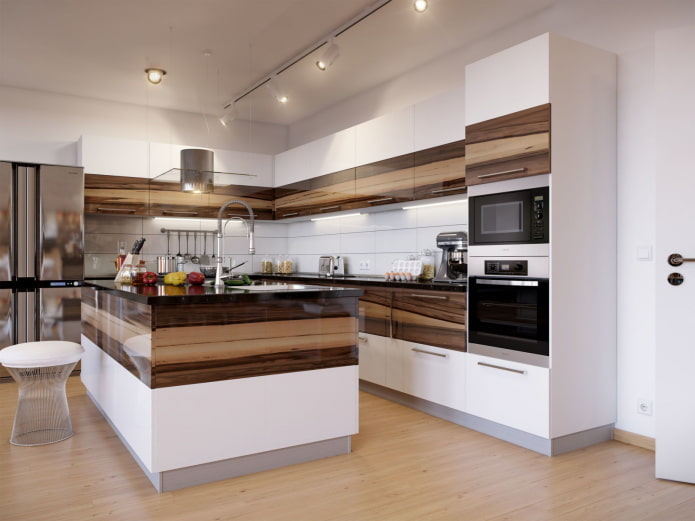

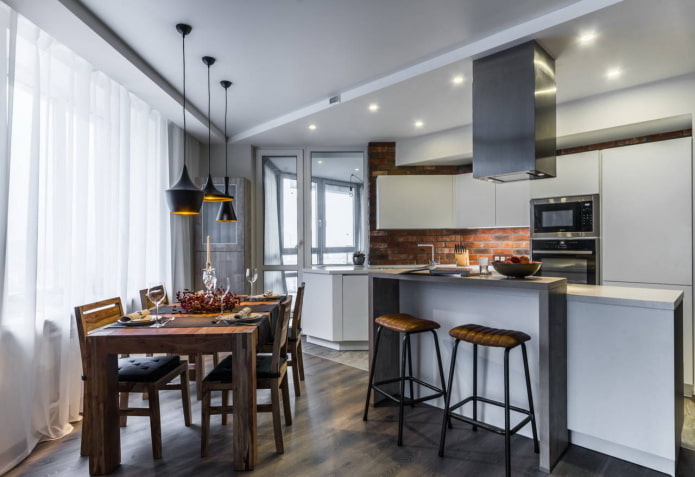
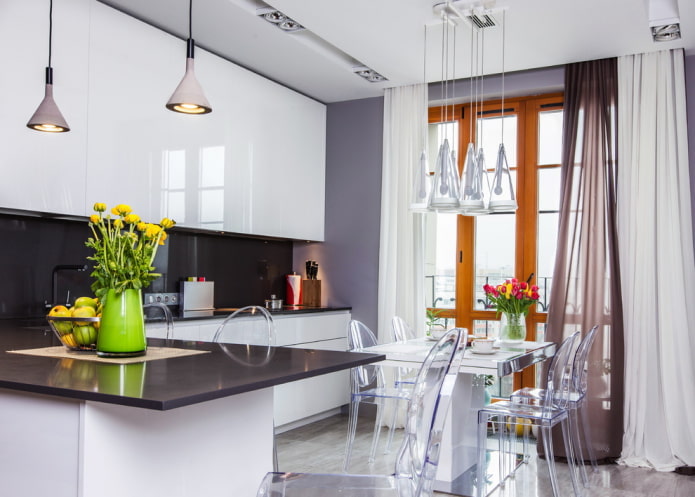
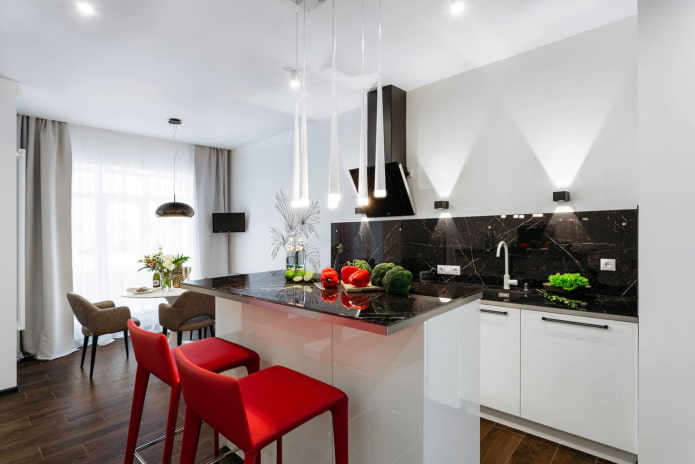

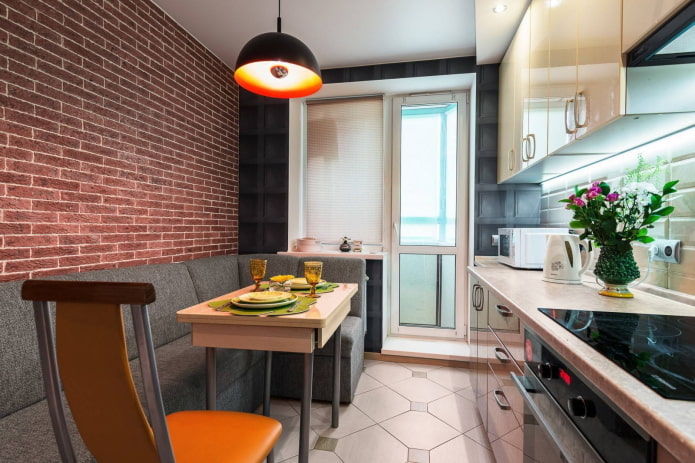
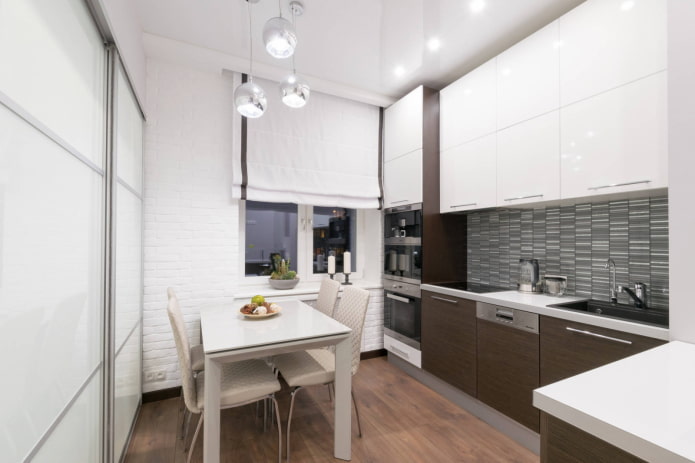
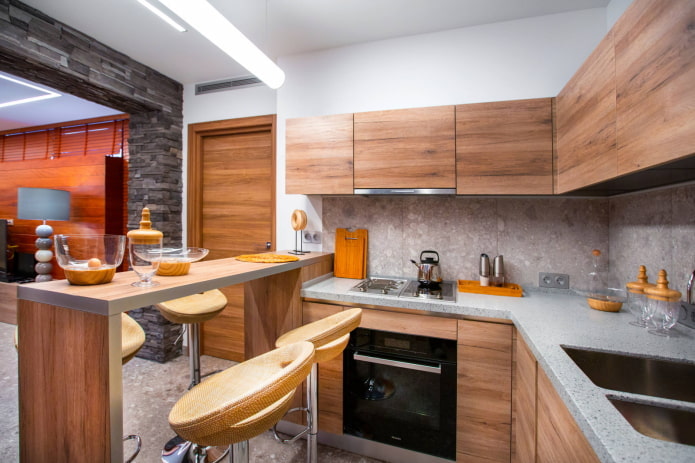
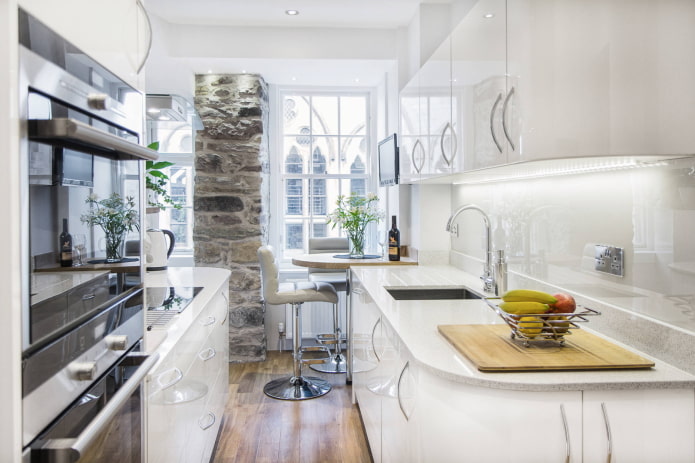
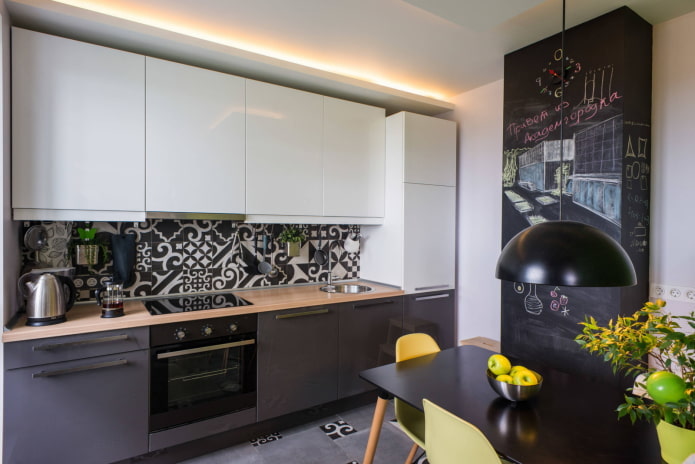
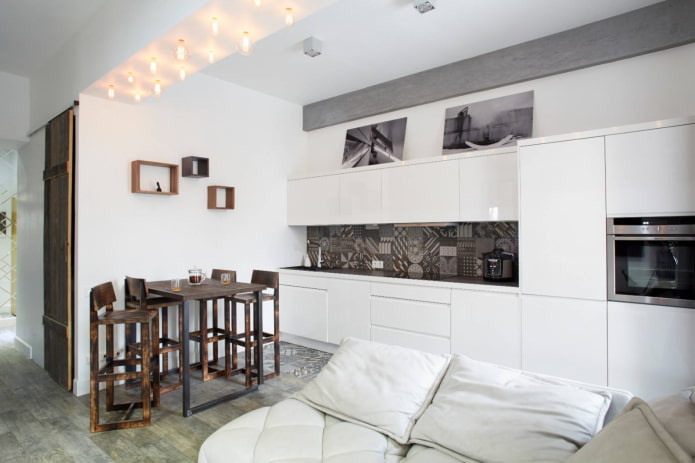

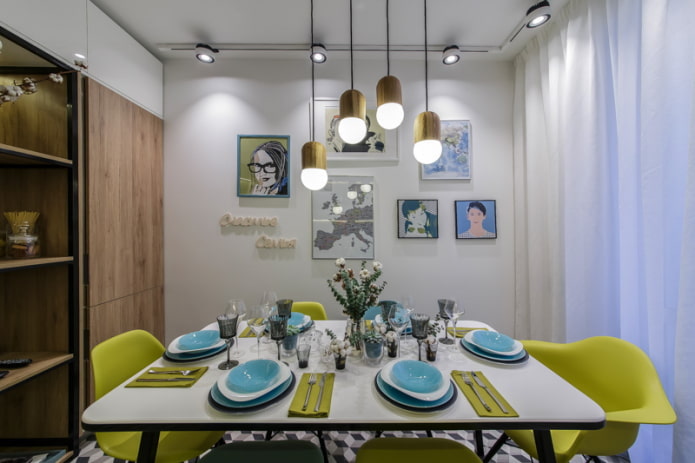
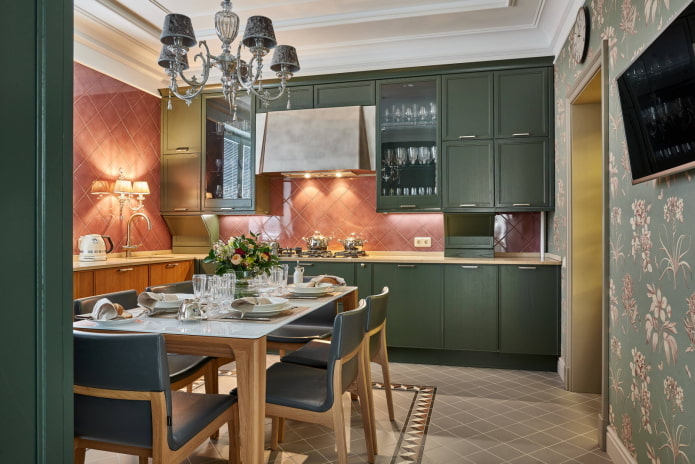
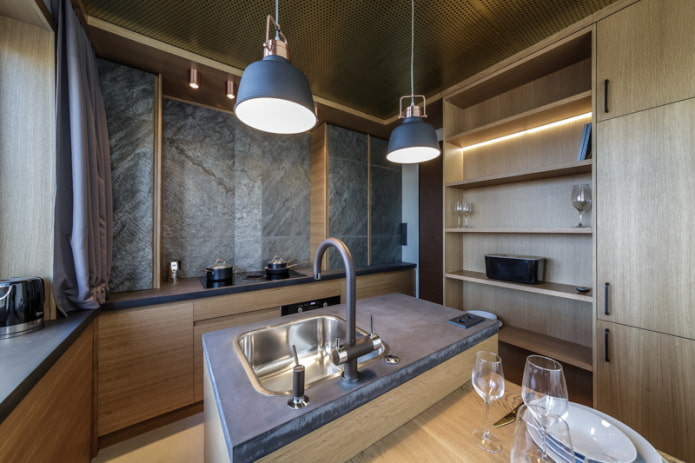
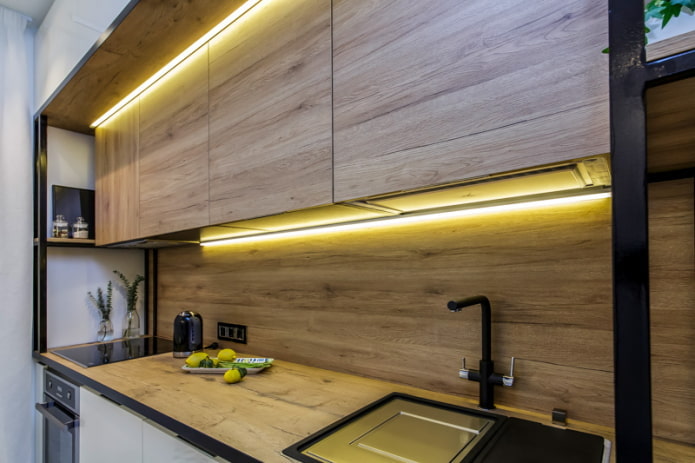
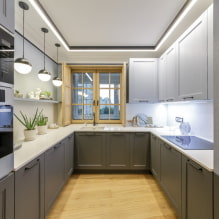
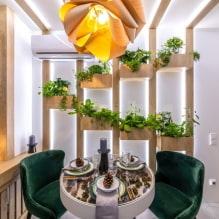
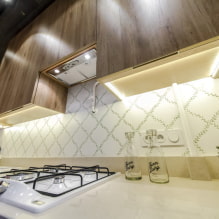
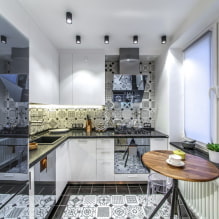

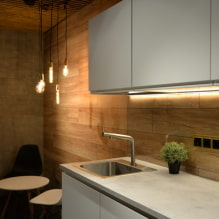
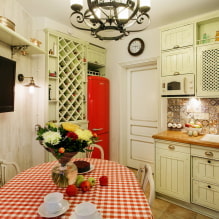
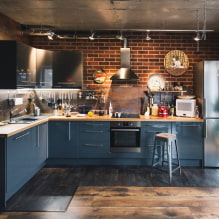
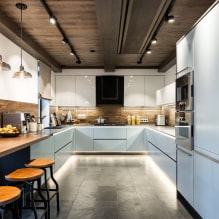
 How to choose the color of your kitchen sink?
How to choose the color of your kitchen sink? White kitchen set: features of choice, combination, 70 photos in the interior
White kitchen set: features of choice, combination, 70 photos in the interior Black set in the interior in the kitchen: design, choice of wallpaper, 90 photos
Black set in the interior in the kitchen: design, choice of wallpaper, 90 photos How to choose curtains for the kitchen and not regret it? - we understand all the nuances
How to choose curtains for the kitchen and not regret it? - we understand all the nuances Design of a white kitchen with a black countertop: 80 best ideas, photos in the interior
Design of a white kitchen with a black countertop: 80 best ideas, photos in the interior Kitchen design with green wallpaper: 55 modern photos in the interior
Kitchen design with green wallpaper: 55 modern photos in the interior